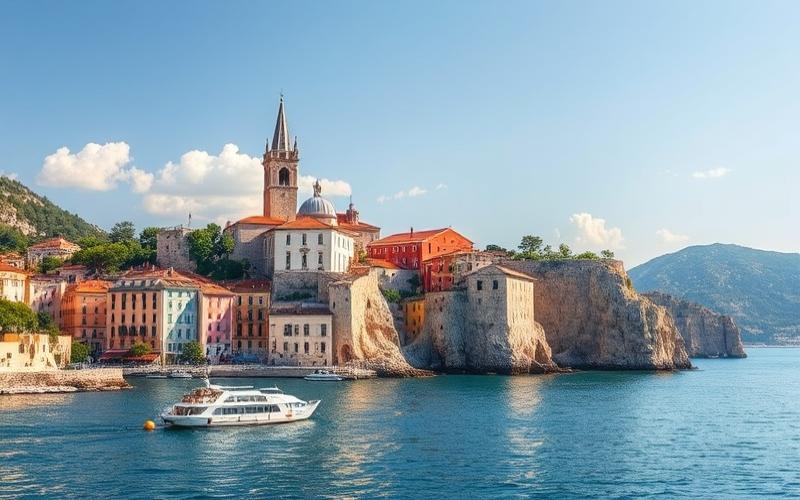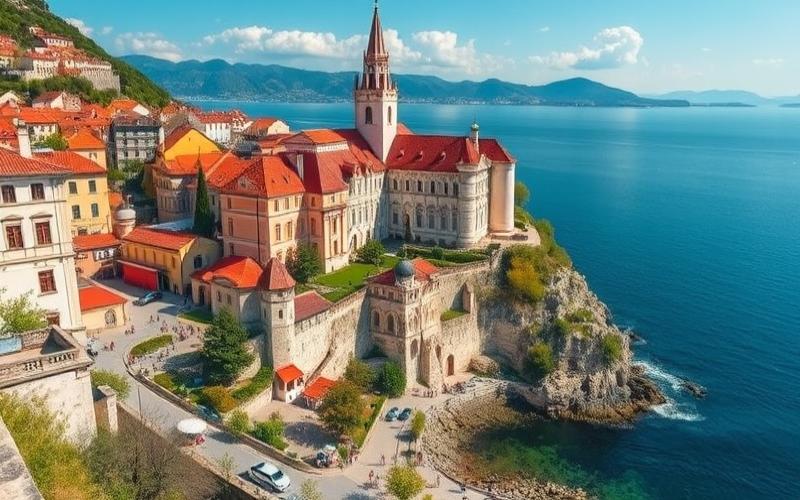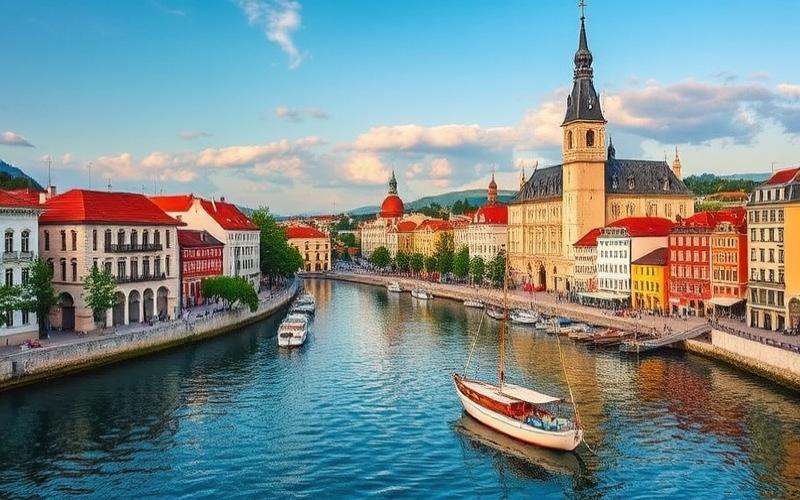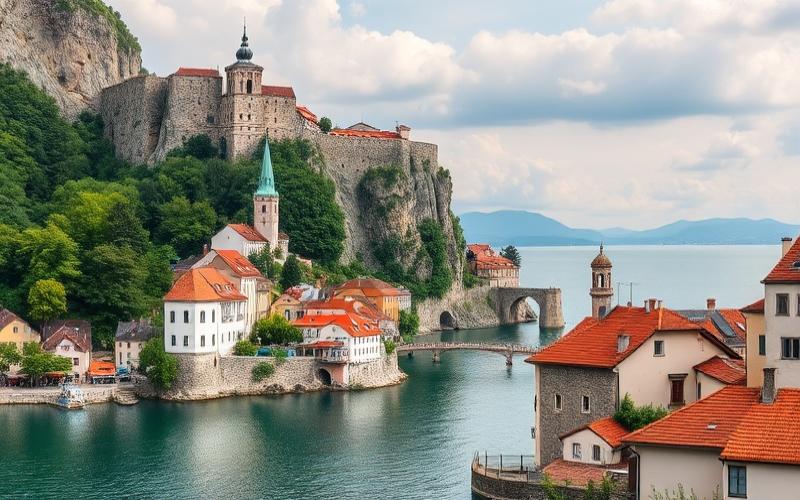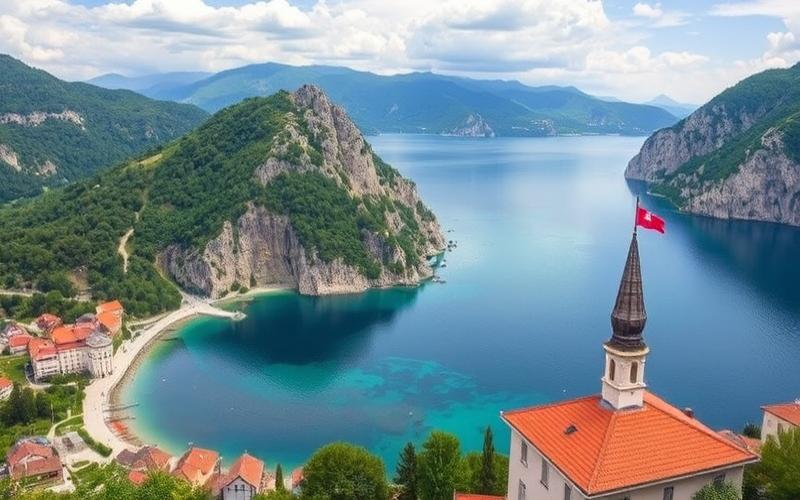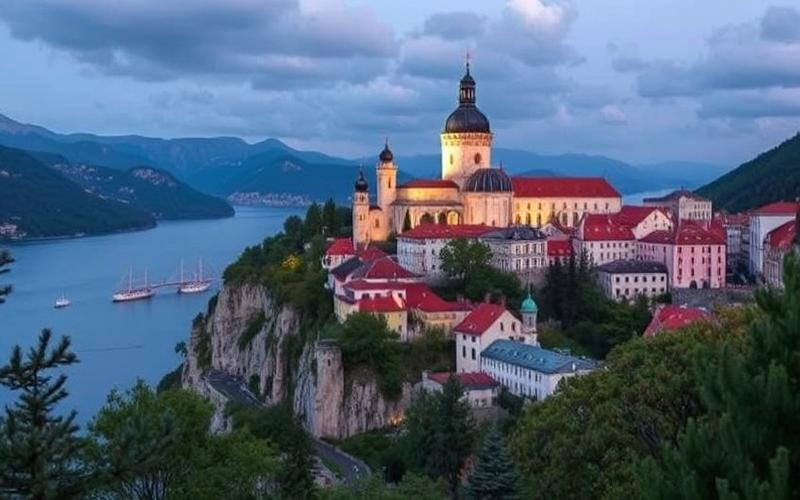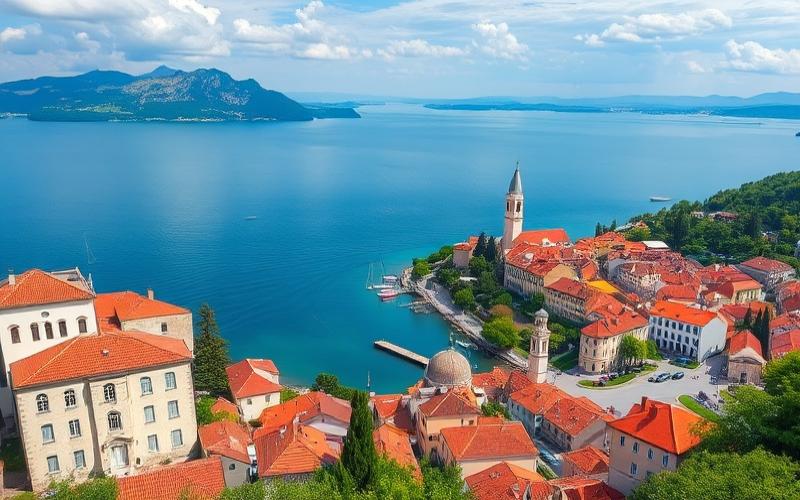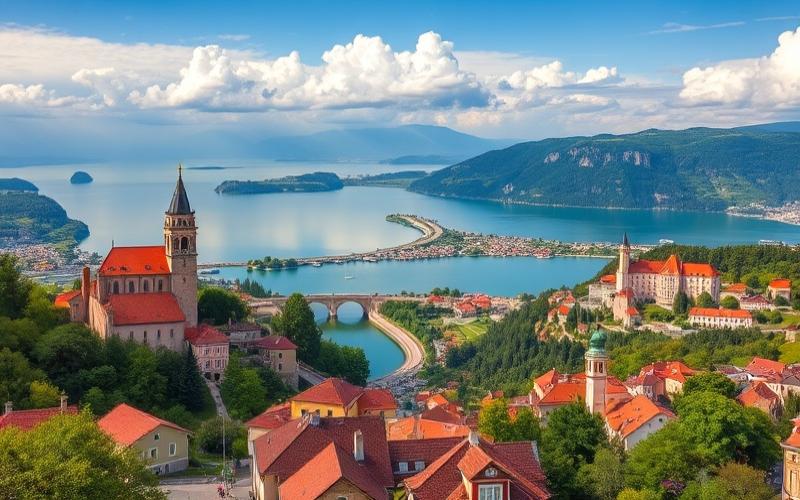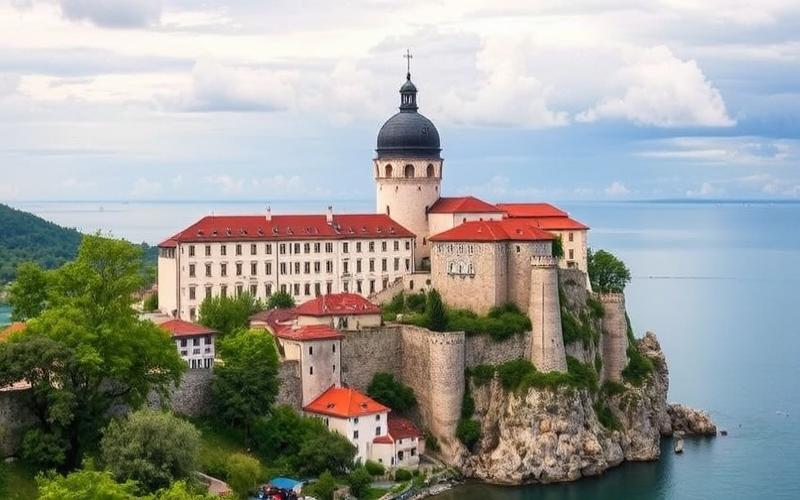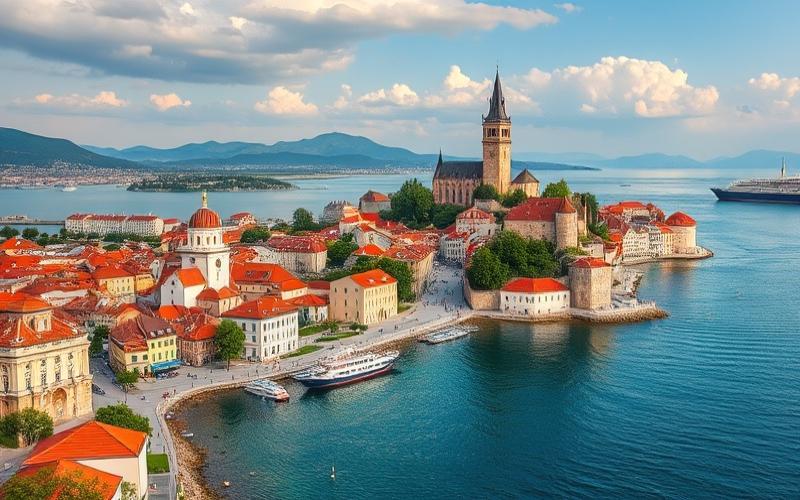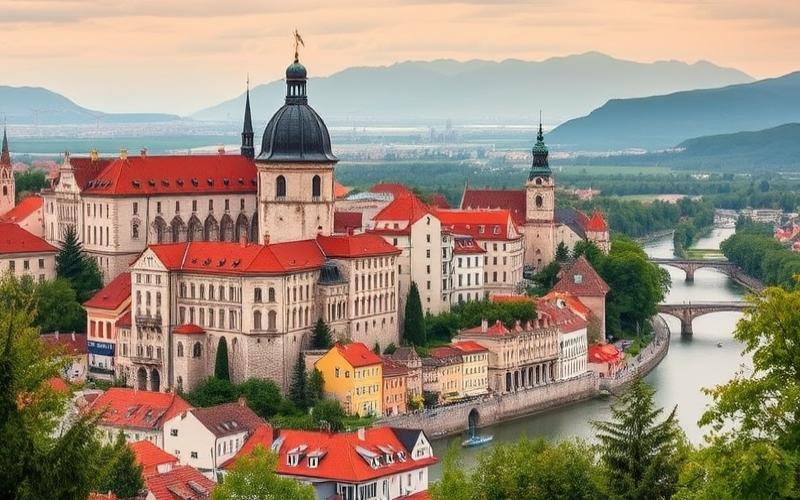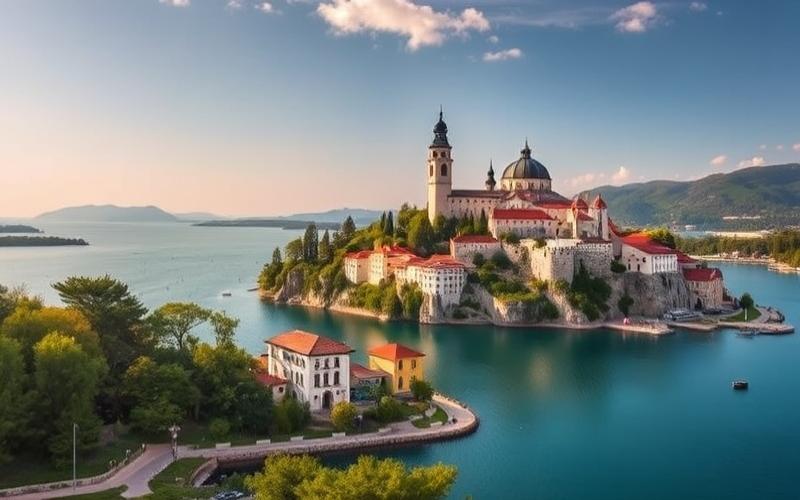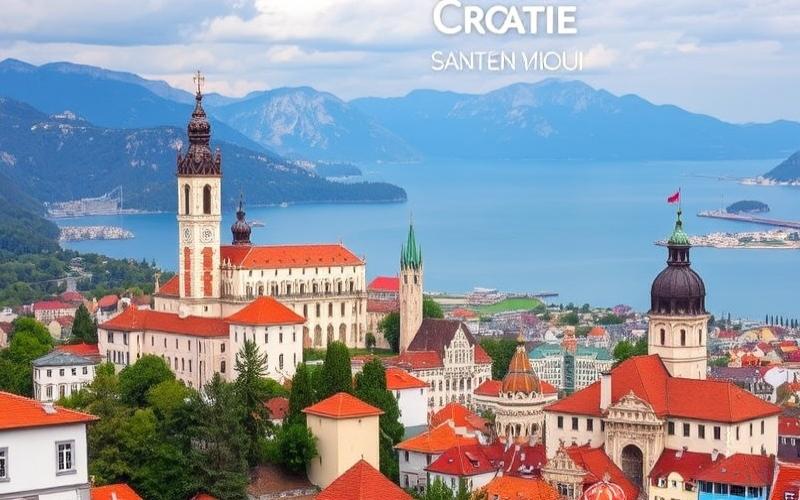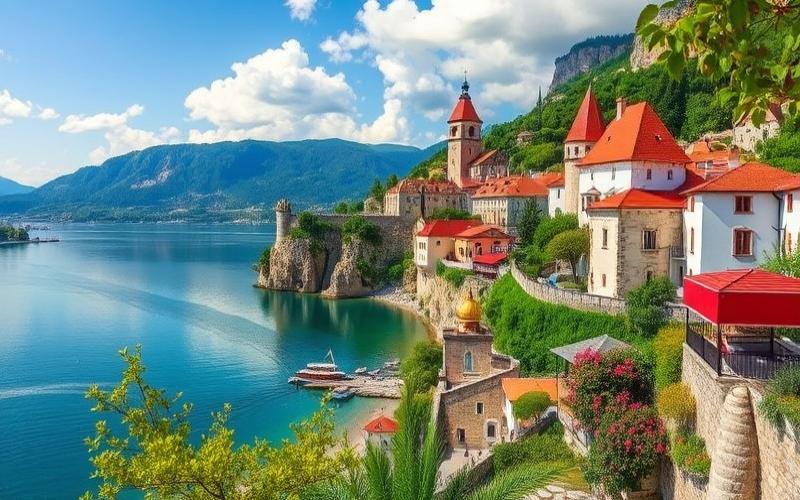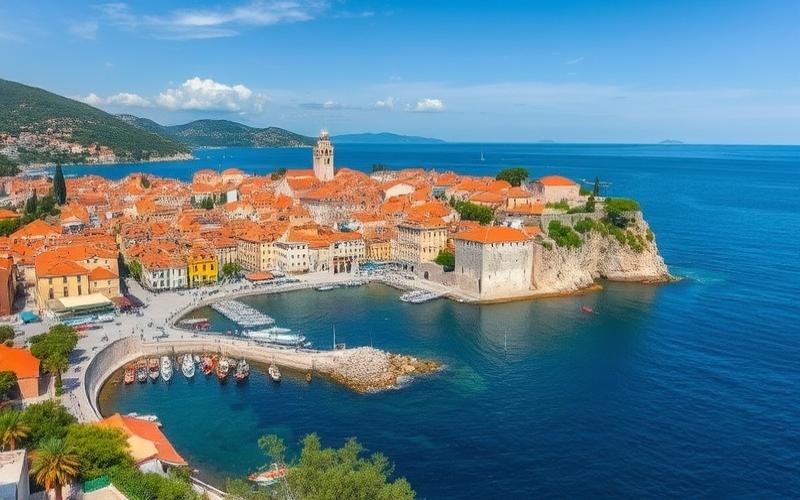
 Published on and written by Cyril Jarnias
Published on and written by Cyril Jarnias
Nestled in the heart of Europe, Croatia dazzles travelers with its natural and cultural treasures, offering a spectacular array of sites that capture the imagination.
From the majestic Dalmatian coast with its crystal-clear waters and idyllic beaches, to the mysterious Plitvice Lakes, an enchanting network of waterfalls and lush forests, every corner of this country invites escape.
From the vibrant energy of Dubrovnik, the “Pearl of the Adriatic,” to the picturesque alleys of Rovinj, and the historical riches of Split, each place tells a fascinating story.
For culture enthusiasts, Croatia offers a journey through time with sites listed as UNESCO World Heritage, providing a fascinating glimpse into its diverse heritage.
Immersed in breathtaking landscapes, visitors will discover a country where nature and history harmoniously meet, promising an unforgettable experience.
Discovering Croatia’s Tourist Gems
Croatia captivates with the diversity of its natural sites, the richness of its historical heritage, and the beauty of its islands. Here is a selection of the most iconic sites not to be missed.
| Site | Type | Highlights | Recommended Activities |
|---|---|---|---|
| Dubrovnik | Historic City | City Walls, UNESCO Heritage, Sea Views | Walking the Walls, Museum Visits, Strolling Stradun |
| Split | Historic City | Diocletian’s Palace, Mediterranean Vibe | Exploring the Palace, Strolling the Riva, Swimming at Bacvice |
| Plitvice | National Park | Turquoise Lakes, Waterfalls, Diverse Wildlife | Hiking, Electric Boat Ride, Photography |
| Hvar | Island | Picturesque Villages, Lavender Fields, Nightlife | Relaxing on Beaches, Visiting the Harbor, Boat Excursion |
| Brač (Zlatni Rat) | Island/Beach | Iconic Beach, Water Sports, Traditional Villages | Swimming, Kitesurfing, Cycling |
| Krka | National Park | Waterfalls, Watermills, Monastery | Hiking, Swimming under Waterfalls, Monastery Visit |
| Mljet | Island/National Park | Saltwater Lakes, Dense Forest, Island Monastery | Kayaking, Cycling, Monastery Visit |
Dubrovnik, the Pearl of the Adriatic
- UNESCO-listed fortified Old Town, surrounded by nearly 2 km of walls, offering spectacular views of the Adriatic Sea and orange-tiled roofs.
- The Stradun, the main marble thoroughfare, leads to architectural gems like the Rector’s Palace and the Assumption Cathedral.
- Fun Fact: The city served as a filming location for the series Game of Thrones, attracting many fans for themed tours.
- Activities: Walk the entire circuit of the walls, wander the cobblestone alleys, enjoy the beaches below, and taste local specialties in konobas.
Split and Diocletian’s Palace
- Historic center built around the palace of Roman Emperor Diocletian, a masterpiece of ancient architecture inscribed as UNESCO.
- Split combines Roman ruins, lively alleys, traditional markets, and a vibrant Mediterranean atmosphere.
- Fun Fact: The palace is still inhabited, and its basements were used as hiding places during medieval invasions.
- Activities: Guided tour of the palace, stroll along the Riva promenade, swim at urban beaches.
Plitvice Lakes National Park
- Unique ensemble of 16 terraced lakes connected by numerous waterfalls, surrounded by lush vegetation.
- Listed as a UNESCO World Heritage site, the park is home to remarkable wildlife: brown bears, wolves, otters, and over 120 bird species.
- Fun Fact: The site was one of the first national parks created in Europe, in 1949.
- Activities: Hiking on wooden walkways, electric boat ride on Lake Kozjak, wildlife and flora observation.
The Island of Hvar
- Renowned for its lively harbor, lavender fields, vineyards, and stone villages.
- The island is also famous for its nightlife and pebble beaches with translucent waters.
- Fun Fact: Hvar has one of the highest sunshine rates in Europe, with over 2700 hours of sun per year.
- Activities: Visit the fortress, taste local wines, boat excursion to the Pakleni Islands.
Other Gems to Explore
- Krka National Park: Seven spectacular waterfalls, possibility to swim under some falls, historic watermills, and monastery on Visovac Island.
- Brač Island (Zlatni Rat Beach): Pebble beach in a tongue shape, ideal for kitesurfing, surrounded by pine forests and authentic villages.
- Mljet: Wild island featuring two saltwater lakes and a Benedictine monastery on a central islet, perfect setting for hiking and kayaking.
List of Must-Do Activities by Site:
- Dubrovnik: Walk the city walls, visit the cathedral, dive into the Adriatic Sea.
- Split: Discover Diocletian’s Palace, fish market, swim at Bacvice.
- Plitvice: Hike the trails, boat ride, bird watching.
- Hvar: Stroll through the old port, excursion to Pakleni Islands, lavender tasting.
- Krka: Swim under waterfalls, visit the watermills, hike around the park.
- Brač: Relax at Zlatni Rat, explore by bike, taste local olive oil.
- Mljet: Kayak on the lakes, visit the monastery, observe wild fauna.
Key Takeaway: Croatia is a treasure where nature, history, and culture combine to offer visitors an unforgettable experience, between stunning panoramas, vibrant cities, and paradise islands.
Good to Know:
To avoid crowds in Dubrovnik, visit the Old Town early in the morning, and don’t forget to explore Plitvice Lakes National Park in winter for a magical view of frozen waterfalls.
How to Explore Croatian Wonders with Ease
Transportation Options in Croatia
- Local Buses: Dense and reliable network, ideal for connecting cities and tourist sites, faster and more frequent than trains. Tickets can be purchased at the bus station or from the driver. Booking recommended in high season.
- Car Rental: Offers optimal freedom, especially for exploring less-served regions. Must be at least 21 years old with a valid driver’s license and a credit card in the main driver’s name.
- Ferries and Catamarans: Essential for reaching the islands (Brac, Hvar, Korcula, Mljet…). Main departure ports are Split, Dubrovnik, Zadar, and Rijeka. Ferries also transport cars; catamarans are faster but for pedestrians only.
- Train: Underdeveloped and slow; useful only for connecting some major cities (Zagreb, Split, Rijeka).
- Domestic Flights: Between Zagreb, Pula, Zadar, Split, and Dubrovnik, useful for saving time on long distances.
| Transport | Advantages | Disadvantages | Ideal for… |
|---|---|---|---|
| Bus | Extensive network, economical | Sometimes crowded, variable schedules | City/site connections |
| Car | Freedom, flexibility | Summer traffic, rental required | Exploring off the beaten path |
| Ferry | Access to islands, cars allowed | Seasonal frequency, summer waits | Island discovery |
| Train | Comfort, reasonable price | Slowness, few lines | Trips between major cities |
| Plane | Speed over long distances | Cost, airport formalities | Zagreb-Dubrovnik/Pula |
Best Times to Visit
- May-June and September-early October: Pleasant climate, swimmable sea, moderate crowds, milder prices.
- July-August: Peak tourist season, crowded sites and beaches, high prices, heavy traffic.
- Off-season: Some transport (ferries, buses) and accommodations may be reduced or closed.
Tips for Easy Access to Main Sites
- Dubrovnik: Prefer arrival early morning or late afternoon. Use local buses or stay outside the Old Town to avoid crowds and high prices. Limited parking, prefer park-and-ride lots.
- Plitvice Lakes National Park: Accessible by bus from Zagreb, Zadar, or Split (direct route). Arrive at opening to enjoy the calm and book tickets in advance.
- Dalmatian Islands (Hvar, Brac, Korcula): Frequent departures by ferry or catamaran from Split. Book in advance during high season, especially with a car. Allow time for boarding.
Tips for Optimizing Your Itinerary
- Prefer a loop itinerary (e.g., Zagreb > Plitvice > Zadar > Split > Dubrovnik) to limit backtracking.
- Alternate city visits, national parks, and islands to diversify experiences.
- Plan realistic travel times, especially in summer when traffic can be heavy.
Recommended Apps and Interactive Maps
- Rome2rio: To quickly compare all transport means between two points.
- GetByBus and Omio: To book bus tickets and compare schedules.
- Jadrolinija: Ferry schedules and reservations.
- Google Maps or Maps.me: For navigation, including offline.
- Croatia Ferries (website or app): Clear visualization of maritime connections.
Respecting Local Customs and Responsible Tourism
- Respect local customs (decent attire in villages, politeness, heritage respect).
- Do not pick plants or disturb wildlife in national parks.
- Prefer local accommodations and restaurants to support the Croatian economy.
- Limit single-use plastic, especially on beaches and in parks.
- Follow marked trails, do not leave paths in natural sites to preserve ecosystems.
- Adopt a respectful attitude towards the population and other travelers.
Traveling in Croatia is an opportunity to discover natural and cultural wonders, provided we preserve them for future generations.
Good to Know:
Prefer buses or car rentals to explore Croatia at a lower cost, and use ferries to visit the Dalmatian Islands, while avoiding the peak summer season to enjoy pleasant weather without the crowds. Consider apps like Moovit for public transport and OpenStreetMap to plan your visits, all while respecting local customs and adopting behavior that respects natural wonders.
Accommodation Options for a Memorable Stay in Croatia
In Croatia, the accommodation offering is as varied as the country’s landscapes. You’ll find options for all tastes and budgets, from refined luxury to nature adventures:
| Accommodation Type | Main Characteristics | Notable Advantages |
|---|---|---|
| Luxury Hotels | Elegant rooms, spas, pools, sea views, personalized services | Prime locations, modern comfort, high-end service |
| Hostels | Shared or private rooms, friendly atmosphere, affordable prices | Ideal for small budgets, socializing, often in city centers |
| Villa Rentals | Private houses, often with pools, spacious areas | Perfect for families/groups, privacy, autonomy |
| Camping | Natural settings, beach/lake access, sometimes bungalows | Nature immersion, reduced budget, relaxed atmosphere |
| Apartments | Equipped lodgings, all price ranges | Flexibility, local living, often in city centers |
Specifics by Destination:
Dubrovnik:
- Prestigious seaside hotels with panoramic views of the Adriatic and city walls
- Modern villas on the heights, ideal for groups seeking luxury and intimacy
- Staying in the Old Town offers immersion in a classified heritage, with many boutique hotels in historic buildings
Split:
- Possibility to sleep within Diocletian’s Palace itself, in hotels where ancient stones meet contemporary design
- Renovated apartments in traditional buildings, perfect for feeling the local vibe
- Proximity to the port and beaches, easy access to ferries for the islands
Hvar:
- Luxury villas and hotels, often with stunning sea views
- Small charming hotels offering tranquility and proximity to beaches or lively nightlife
- Ideal for combining relaxation, outings, and heritage discovery
Croatian Islands:
- Small-scale accommodations, traditional stone houses, family-run guesthouses
- More authentic and relaxed atmosphere, often direct sea access
- Perfect for a “slow travel” experience, away from mainland hustle
Unique Characteristics of Croatian Hospitality:
Traditional Architecture:
- Stone buildings, colorful wooden shutters, red-tiled roofs
- Interiors blending ancient elements (exposed walls, arches) and modern comfort
Typical Services:
- Warm welcome, personalized advice on local activities
- Breakfasts composed of fresh, often local products (cheeses, cured meats, fruits)
- Possibility of wine tastings or regional specialties in some guesthouses or hotels
Best Travel Times and Offers:
Low Season (April-June, September-October):
- More advantageous prices, fewer crowds, mild climate
- More choice and flexibility for accommodations, especially in popular destinations
High Season (July-August):
- Higher rates, advance bookings essential in tourist spots
- Ideal for enjoying festive atmosphere and beach activities, but more crowded
Practical Tips for Choosing the Best Accommodation According to Your Desires:
For a Relaxing Stay:
- Prefer villas with pools, seaside hotels, or island resorts
- Choose establishments offering spas, private beach access, or peaceful gardens
For a History and Culture-Focused Stay:
- Choose a hotel or apartment located in a historic center (Dubrovnik, Split)
- Look for accommodations in renovated old buildings for the ambiance
For an Adventure or Nature Stay:
- Opt for camping, lodgings near natural parks, or on less frequented islands
- Traditional houses or agritourism offer direct contact with Croatian nature
Additional Tips:
- Compare booking platforms and prefer local sites to find exclusive offers
- Check proximity to transport (ferries, buses) for easy regional exploration
- Remember to book early in high season, especially for islands or charming accommodations
- For an authentic experience, try family-run guesthouses or rentals in small coastal villages
Take advantage of the diversity of Croatian accommodation to personalize your stay and live an unforgettable experience.
Good to Know:
In Croatia, choose between luxury hotels, hostels, villas, and camping, each option offering a unique experience like discovering traditional buildings in Dubrovnik or aquatic adventures in Hvar; for advantageous rates, prefer spring or autumn. For a history-focused stay in Split, opt for accommodation near Diocletian’s Palace, while a villa in Hvar is ideal for a relaxing getaway.
Disclaimer: The information provided on this website is for informational purposes only and does not constitute financial, legal, or professional advice. We encourage you to consult qualified experts before making any investment, real estate, or expatriation decisions. Although we strive to maintain up-to-date and accurate information, we do not guarantee the completeness, accuracy, or timeliness of the proposed content. As investment and expatriation involve risks, we disclaim any liability for potential losses or damages arising from the use of this site. Your use of this site confirms your acceptance of these terms and your understanding of the associated risks.





